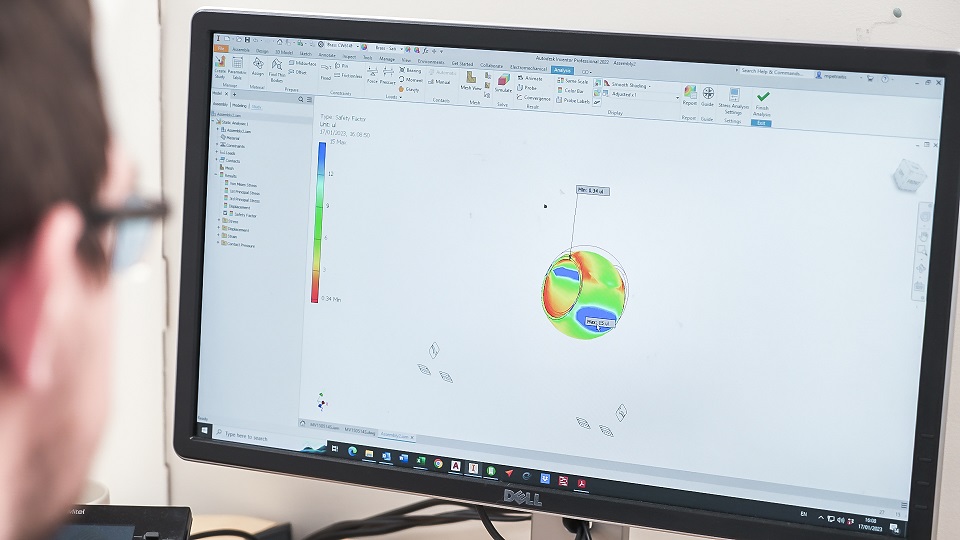Balustrades: what you need to know

Paul Smith, Head of Marketing at long-standing F.H. Brundle, explores the rise of balustrades.
Today, we think of balustrades as the epitome of modern design.
When we hear the word, we picture futuristic new-builds – flat roofs, floor-to-ceiling windows, sliding doors with frames that are almost invisible.
But the ancient structures the earliest surviving balustrades are found on couldn’t be more different.
As strongly as we associate them with the glass-and-steel age we’re living in now, they date back to a time when wood, stone and marble were the dominant materials used in construction.
There are murals from the ancient kingdom of Assyria – encompassing parts of Iraq, Turkey and Syria as we know them today – that depict buildings with balustrades from over 3,000 years ago.
There’s also evidence of their use in India and China in ancient times – although interestingly, none whatsoever that they were ever used in Greece and Rome, despite their reputation for impressive architecture.
However, they didn’t come into their own until over two thousand years later in Renaissance Italy, where their use became widespread.
In the 1500s, they featured on landmark buildings like the Villa Medici and in designs by Michaelangelo – and it was also in Italy that they first got their name.
As everyone reading this will know, a balustrade essentially consists of a horizontal ‘rail’ section, held up by many vertical balusters.
In the architecture of the day, these balusters were often a bulb-like shape, which locals thought looked like pomegranate flowers – balaustra, in Italian. Unsurprisingly, it’s from here that the name ‘balustrade’ was derived.
What’s not changed, however, is the fundamental purpose that balustrades serve.
They’re an elegant, visually pleasing solution to an age-old problem – providing safety at height.
Instead of ugly, oppressive structures that block out natural light and spoil scenic views, balustrades offer a much more seamless alternative.
Safety and style
Today’s sleek and stylish glass balustrades might not look all that much like something you’d find on the Villa Medici, but they serve fundamentally the same two key purposes.
They exist to keep people safe – allowing them to admire the view in high-up places, and prevent accidents. And they exist to look good.
However, one thing Michaelangelo – and the architects of ancient Assyria – didn’t have to contend with is the large and often complex amount of regulation governing balustrade use that we do in 2022.
In residential settings in the UK, Building Regulations require that balustrades, or similar barriers, be used in spaces with a height difference of more than 600mm.
In non-residential applications they have to be used on staircases with more than two risers, and spaces where the height difference is over 380mm.
There are also strict regulations governing the height of glass used, which varies depending on the setting.
According to Approved Document K in the Building Regulations, when used in conjunction with stairs, landings, ramps, and edges of internal floors the balustrade must be 900mm in height. For external balconies and the edges of roofs, they have to be 1,100mm.
In public sector buildings, offices and retail settings, similar rules apply – balustrades must be 900mm for flights of stairs, 1,100mm for all other settings.
Safety performance
In addition, there are several key performance markers balustrade products have to meet to ensure they’re offering optimum safety performance.
The first concerns ‘line load’ – the amount of horizontal force a balustrade can withstand on the top, as if someone was leaning against it.
Another is ‘uniformly distributed load’, or the amount of force a product can withstand being applied to its midsection – while a third concerns ‘concentrated load’, or the sort of sudden impact that occurs if someone falls against a product, or some other accident occurs.
In all three cases, products have to demonstrate a certain level of performance, laid out in Part B of Building Regulations and BS EN 1991-1.
Particular attention has to be paid to the type of building, as different structures with different uses and occupancy levels have different requirements.
Speak to F.H. Brundle. At F.H. Brundle, we stock a range of exceptional glass balustrade products.
Want to know more? Call 01708 398048, visit www.fhbrundle.co.uk or email sales@brundle.com




















